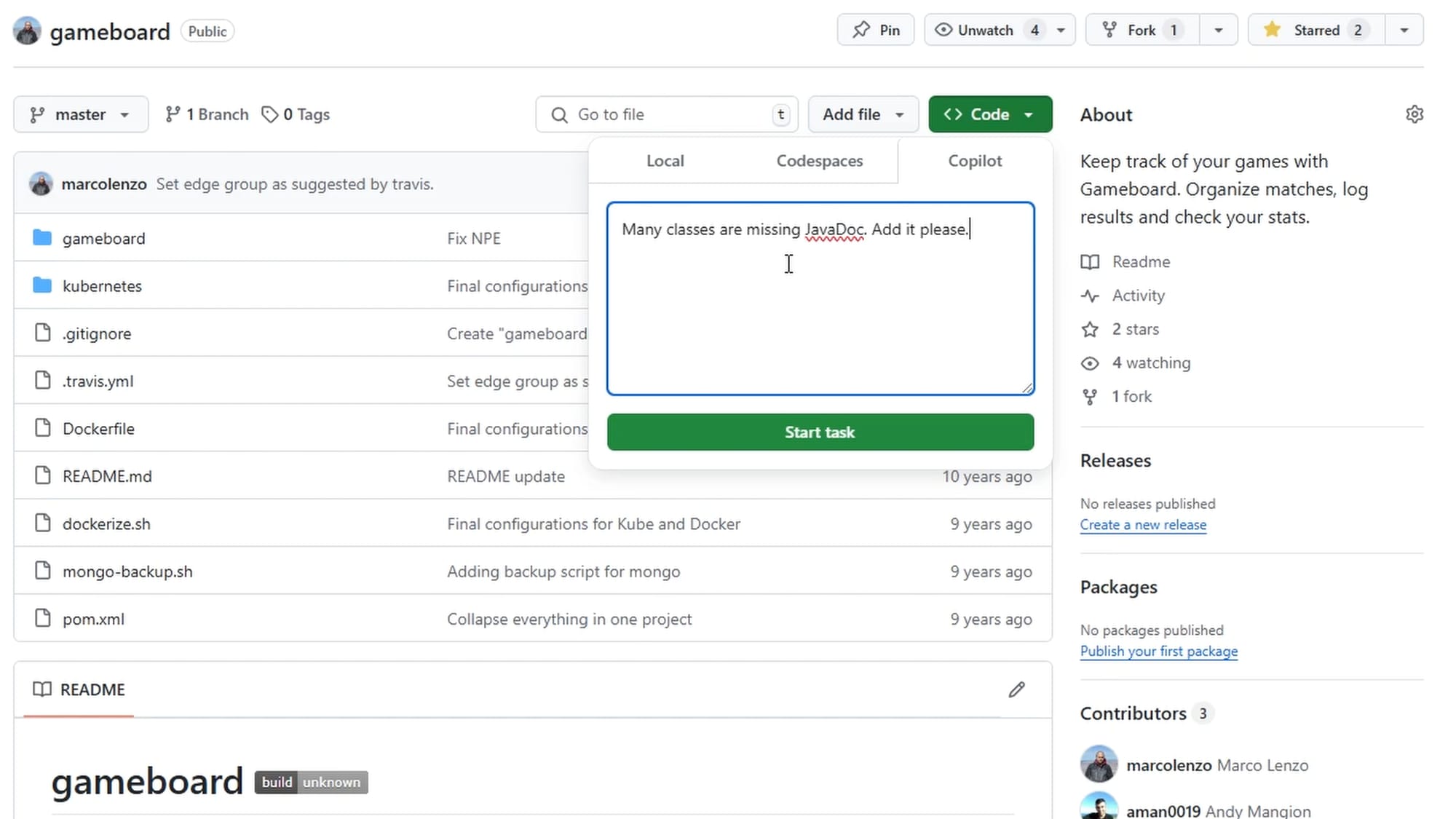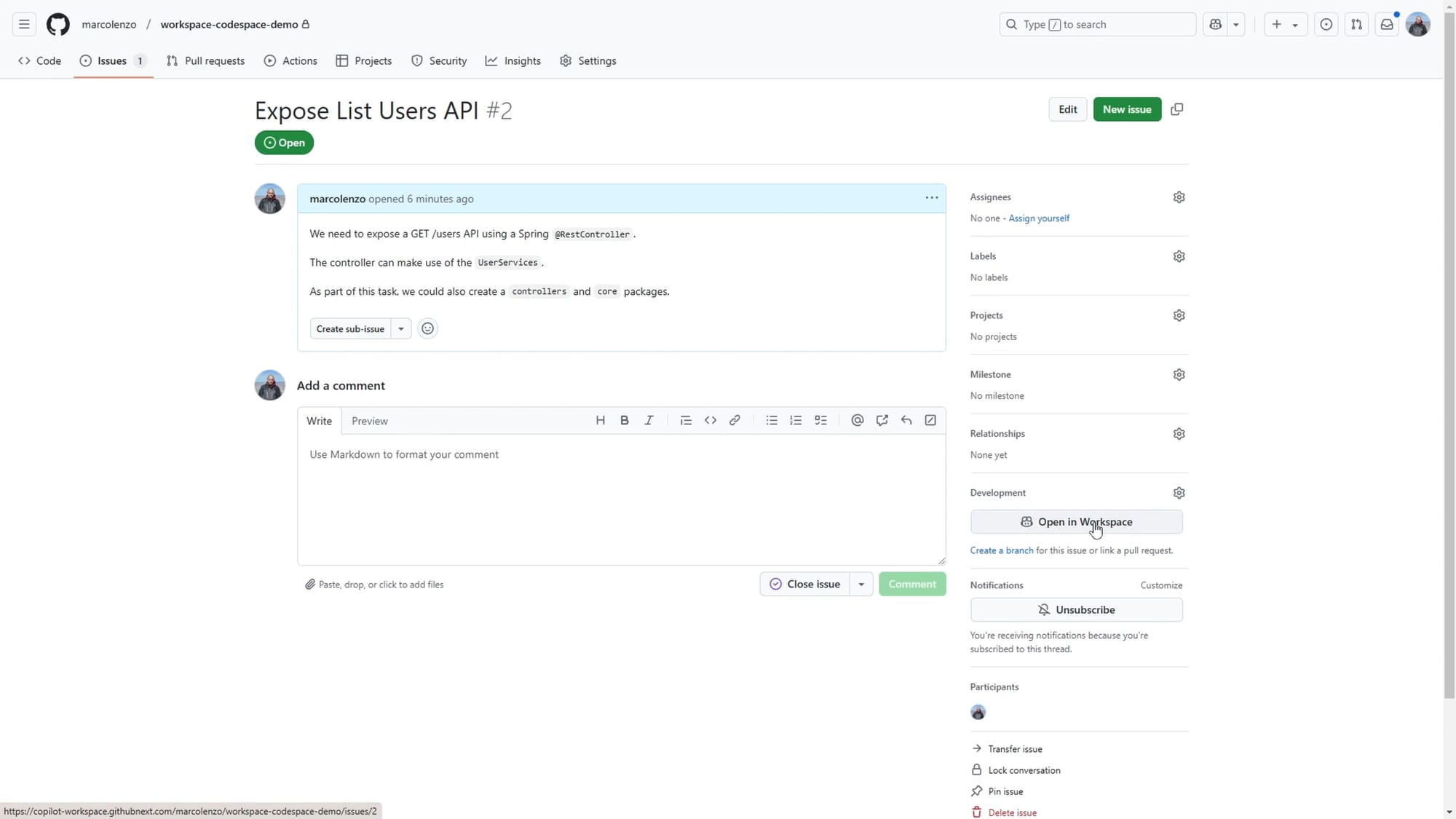Software development has always been a challenging industry when it comes to staying current and up-to-date. However, recent advancements in AI have actually made the problem worse. It’s difficult, if not impossible, to try every new technology or feature. That’s why I’m trying as many tools as I can, hoping to give visibility into what’s happening so other software engineers can decide where to invest their money.
Recently, I even stopped my ChatGPT Plus subscription to give Gemini a decent try (I’ll write about that in another article). In this one, I’m covering GitHub Copilot Workspaces, a technical preview from the GitHub Next team.
What’s a Github Copilot Workspace?
A GitHub Copilot Workspace is an agentic dev environment designed for everyday tasks. Think of it as a web-based feature accessible from your laptop, PC, or even mobile device, where Copilot acts as an AI agent capable of handling entire tasks.
You can brainstorm ideas, generate a plan, and implement it all within the workspace. Copilot can even build and test your code in an integrated cloud environment to ensure everything works as expected. You can also share this environment with colleagues and iterate on it together. Pretty cool, right?
Accessing the Workspace
First things first, you’ll need a Copilot Pro subscription 😁. Copilot Workspace isn’t available on the free plan.
Once you’re subscribed, there are several ways to access a Copilot Workspace. The simplest is creating a task from a repository using the code feature and switching to the Copilot tab.
Starting with the Code feature
Let’s say you have an old, undocumented repository. You can simply task Copilot to generate your JavaDocs, and a workspace will be created.

Copilot starts by brainstorming, analyzing the repository and task details to propose a high-level solution (essentially defining the desired end state). Next comes the planning phase, where Copilot figures out the necessary code changes and commands. In this example, it’s identifying all the classes and methods that need documentation.
Once you’re happy with the plan, you move to the implementation phase, where Copilot does the heavy lifting, generating the necessary code or documentation. Finally, you review the generated code, create a new branch, and open a pull request. If everything looks good, you merge it—done!
This whole process can be surprisingly fast. I did this in about five minutes and it’s a great example of how we can speed up a tedious task—something we might otherwise put off indefinitely. In fact, that code had been undocumented for over nine years!.
Starting with an Issue
You can also create a Copilot Workspace from any issue in your repositories by clicking the “Open in Workspace” button. Copilot will then enter the brainstorming phase, using the task details as its initial prompt.

The task details in Copilot Workspace are ephemeral. They’re copied from the issue but not linked to it. This allows you to modify them, add more details, and iterate through the brainstorming phase as needed.
Codespaces
As mentioned, the workspace is integrated into a cloud environment—a GitHub Codespace. This allows Copilot not only to modify code but also to build and test it within the environment, eliminating the need to switch to your local machine or wait for a GitHub Actions pipeline.
The concept is very cool. However, in my testing, the build was slow and failed when external dependencies, like a MongoDB database, were required for tests. There’s a solution: properly define the Codespace with a devcontainer.json file. However, this isn’t always straightforward. Plus, sometimes the creation of the Codespace took forever or timed out altogether.
Other Ways to Access
Other ways to create a Copilot Workspace session include selecting an existing repository or creating a new one from the main dashboard. You can also bootstrap a project from a repository template by choosing the “Open in a Codespace” option.
Conclusion: Is It Worth It?
So, is GitHub Workspace useful? Is it worth a Copilot Pro subscription? It’s tough to say. This is still a technical preview, and the GitHub Next team is still gathering feedback. I get the sense that even they are questioning its value, regardless of how well it’s implemented.
Personally, I think it’s a very cool feature, but not something I’d use often. Why? We already have Copilot in its AI agent form in VS Code. Just click the tiny chat icon, and you get access to the “Edit with Copilot” feature—much faster, easier to interact with, and there’s no need to rely on cloud-based environments to compile and run tests.
While I was recording this video, GitHub announced its Agent Mode, which is basically a more powerful version of the feature I just mentioned. I’ll be testing that out in my next video.
That said, I can see the value of using Workspaces for quick work on the go—maybe from a laptop without access to a dev environment or a mobile device!
I hope you enjoyed this overview! If you want to stay updated on what I’m working on, make sure to subscribe! …and don’t forget to share so everyone can learn something new! 🙏


